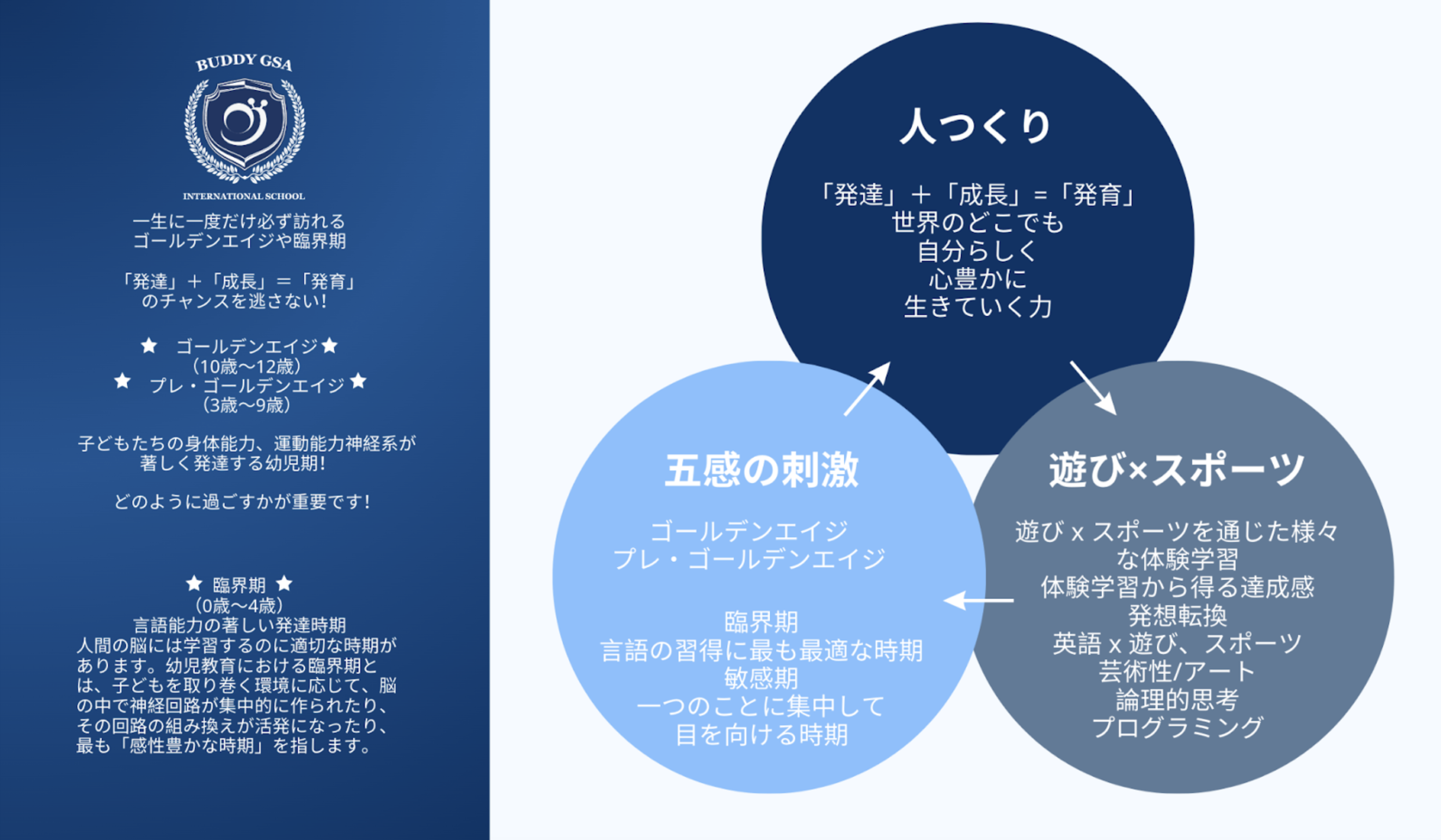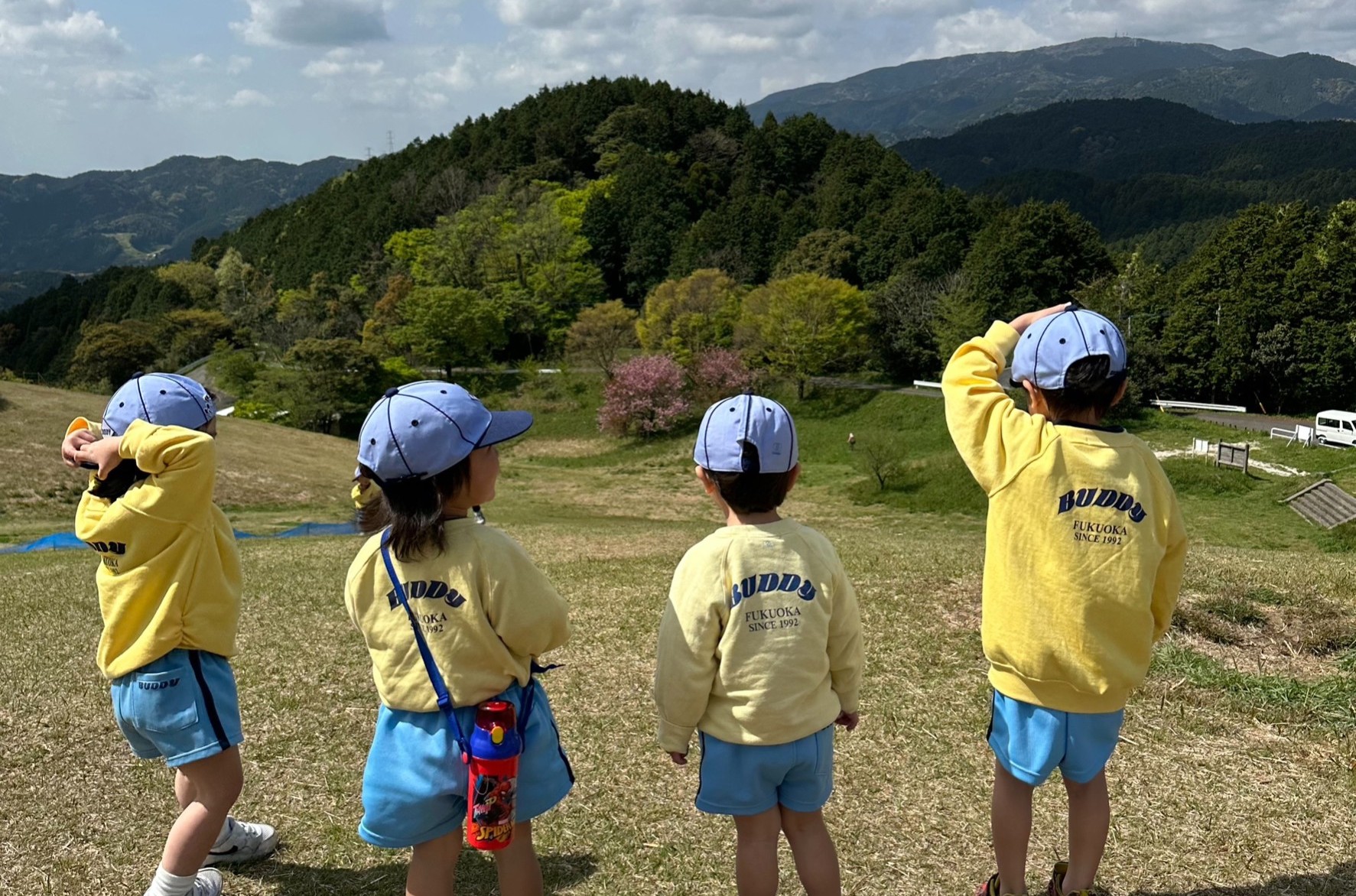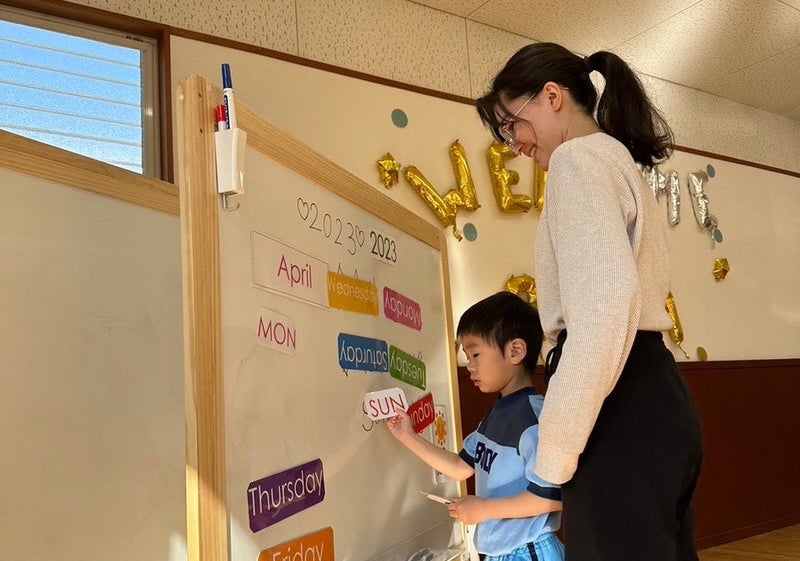GSA Group Philosophy
education to children of all nationalities.“
そして挑戦的で包括的な国際的教育を提供します。)

Student Values
CURIOUS (好奇心):
“Attain, to the best of each individual’s ability, high levels of understanding and competencies across a broad range of subjects.”
持ち合わせている能力の最大限を活かして、あらゆる教科に対してさらなる高い理解度と実力を身に付けたいという好奇心を持ちます。
COLLABORATIVE (協同性):
“Attain the essential knowledge, skills and attitudes to be lifelong learners through collaborative interaction with each other.”
生徒間でお互いに基礎的な知識、スキル、意見を共有し、生涯学び続けられる協和的な環境を作り上げます。
COURAGEOUS (勇気):
“Be curious and courageous independent learners, who take active participation in the learning process.”
自身の学びに対して積極的に取り組み、勇気と自立心を持ちます。
COMPASSIONATE (思いやり):
“Be compassionate international citizens of a changing and challenging world.”
日々移り変わる現代社会において、思いやりと道徳を持ち合わせた国際社会の一員として、自分との違いを考慮しつつ他者の考えを理解できるようになります。
Our Approach

At our school children will learn basic life skills and positive habits such as greeting each other and manners. We will also support them in developing the ability to think for themselves and taking initiative independently. By establishing good communication with our students’ families, we strive to improve the educational environment for children to enjoy their school life, respecting them and their personalities.
A child’s early years play a crucial role in the acquisition of communication and language abilities as well as in the development of their arithmetic skills. If children miss this initial chance of acquiring language comprehension skills, they will need much more time to develop the same ability later in life. This is why our program includes English and mathematics lessons multiple times a week. During their English classes, students have plenty of opportunities to hone their pronunciation, listening, and speaking skills, as well as build strong foundations in phonics which will then help them develop their reading and writing. All of the subjects, with the exception of Japanese language classes, are taught in English.
In addition to English and mathematics, we give importance to the children’s physical and creative development. Special subjects such as physical education, music, and Japanese are integrated into our curriculum and taught by specialist teachers with the support of class teachers. We believe in the power of movement, music, and art to express feelings that sometimes words cannot convey. We wish our children will lead positive lives, surrounded by many friends and with the strength to overcome difficulties. And we hope that sports, art, and music will bring them fulfillment and enrich them as individuals.
We want our kindergarten to be a place where children are eager to come every day to play with friends and have fun learning. Our main goal is to have children enjoy every moment at school, and while they are having fun, equip them with all of the tools and knowledge that will make them shine. We are committed to continuously improving our facilities and educational environment to maintain the highest quality in early childhood education.

The “Golden Age” refers to the period between the ages of six and twelve (elementary school). This is a period when children’s physical and motor abilities develop significantly as they learn how to move their bodies and acquire gross motor skills quickly. Because there are significant physical differences between five-year-olds and twelve-year-olds, the Golden Age is divided into two stages: the “Pre-Golden Age” (ages 5-9) and the “Golden Age” (ages 10-12).
[1-1] Pre-Golden Age (ages 5-9) develops the children’s nervous system
This graph shows the development of different skills at different ages. We can see that a child’s nervous system develops rapidly until the age of five, and reaches 80% of an adult’s nervous system by the age of six. By age twelve, the development of the nervous system is close to 100%. Therefore, the motor skills we use as adults have been mostly acquired by the end of elementary school. By experiencing various movements during the “Pre-Golden Age”, the brain is stimulated to maximize the development of motor skills.
[1-2] Golden Age (ages 10-12) is focused on “instantaneous learning.”
“Instantaneous learning” refers to being able to do something immediately after seeing it done once. During the Golden Age period, children may be able to perform movements they have never tried before just by watching someone else do it. While adults tend to analyze movements to understand them rationally, children can intuitively grasp their basics and demonstrate them instantaneously.







